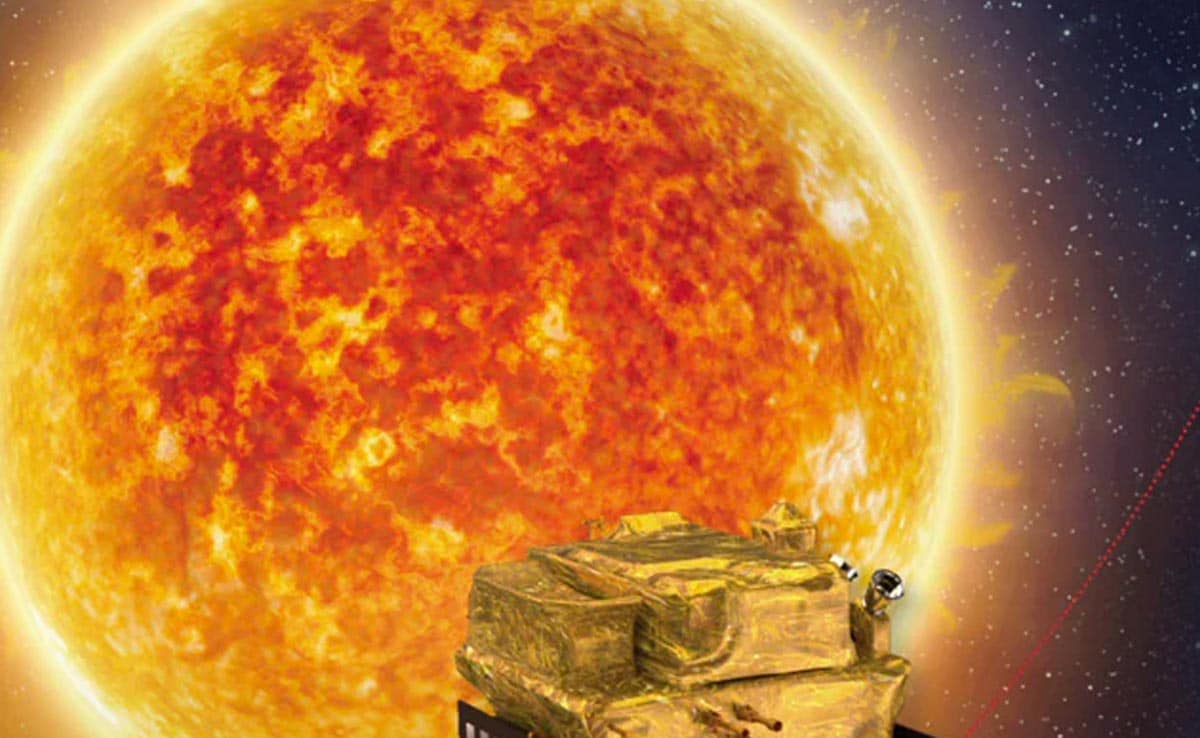
The ambitious journey began four months ago and reached its destination. (Representational)
New Delhi:
Indian Space Research Organisation’s Aditya-L1 spacecraft completed its 1.5 million kilometre-long journey today to study the Sun. The ambitious journey began four months ago and reached its destination. The Aditya-L1 spacecraft has been placed in the Halo orbit, an advantageous point from where it can study the Sun unhindered by eclipses.
Prime Minister Narendra Modi made the big announcement on X (formerly Twitter) and applauded the space agency for the achievement. “India creates yet another landmark. India’s first solar observatory, Aditya-L1 reaches its destination,” the Prime Minister said.
India creates yet another landmark. India’s first solar observatory Aditya-L1 reaches it’s destination. It is a testament to the relentless dedication of our scientists in realising among the most complex and intricate space missions. I join the nation in applauding this…
— Narendra Modi (@narendramodi) January 6, 2024
“I join the nation in applauding this extraordinary feat. We will continue to pursue new frontiers of science for the benefit of humanity,” he added.
“Another grand feat accomplished by ISRO! As part of India’s maiden solar mission, Aditya L1, the observatory has been placed in the final orbit and reached its destination at Lagrange Point 1,” President Droupadi Murmu said.
Another grand feat accomplished by ISRO! As part of India’s maiden solar mission, Aditya L1, the observatory has been placed in the final orbit and reached its destination at Lagrange Point 1. Congratulations to the entire Indian scientist community for the great achievement!…
— President of India (@rashtrapatibhvn) January 6, 2024
The President praised the participation of women in the mission. Aditya-L1 is ISRO’s first mission to study the Sun. Nigar Shaji is a scientist at the UR Rao Satellite Centre, part of ISRO, in Bengaluru and is the project director for India’s first space-based solar observatory.
Science and Technology Minister Dr Jitendra Singh called it ISRO’s “Sun Dance” and said it’s “A glorious turn of the year for Bharat!”
From Moon walk to Sun Dance! What a glorious turn of year for Bharat!
Under the visionary leadership of PM @narendramodi, yet another success story scripted by Team #ISRO. #AdityaL1 reaches its final orbit to discover the mysteries of Sun-Earth connection.— Dr Jitendra Singh (@DrJitendraSingh) January 6, 2024
“India is proudly gazing at the Sun,” Congress President Mallikarjun Kharge said, adding, “We join the nation in celebrating an extraordinary milestone by our dedicated scientists and space engineers at ISRO, as India’s first solar observatory Aditya-L1 reaches its destination.”
India is now proudly gazing the Sun ! 🇮🇳
We join the nation in celebrating an extraordinary milestone by our dedicated scientists and space engineers at @isro, as India’s first solar observatory #AdityaL1 reaches its destination.
India began its journey to sun in 2006, when…
— Mallikarjun Kharge (@kharge) January 6, 2024
“India began its journey to the Sun in 2006 when our scientists proposed a solar observatory with a single instrument for the Sun,” he said.
“It’s a proud moment indeed for Indians,” Maharashtra Deputy Chief Minister Devendra Fadnavis said.
☀️Congratulations @isro !
Congratulations #AdityaL1 !
It’s a proud moment indeed for every Indian 🇮🇳 #AdityaL1Missionhttps://t.co/882TKi6UYM— Devendra Fadnavis (@Dev_Fadnavis) January 6, 2024
What Will Aditya-L1 Do?
The space observatory will keep an eye on the changing space weather and warn scientists about unfavourable changes including, solar storms and flares that may impact the working of satellites. A solar storm is a large-scale magnetic eruption on the Sun which can affect the entire solar system.
“Since Aditya-L1 will look at the Sun continuously, it can warn us of imminent solar electromagnetic effects on Earth and protect our satellites, and other power electrical and communications networks from getting disrupted. This will help continue normal operations by operating them in safe modes, till the solar storm passes by,” ISRO Chairman S Somanath had told NDTV.
Mr Somnath said that India has assets worth over Rs 50,000 crores in space including, over 50 operational satellites that need to be protected against the wrath of the Sun.
The Aditya-L1 satellite, carrying seven payloads, will also conduct scientific experiments to better understand the photosphere, chromosphere and the outermost layers of the Sun (the corona) using electromagnetic, particle and magnetic field detectors.
Built for Rs 400 crore, the nearly 1,500 kg satellite will function as the first space-based Indian observatory to study the sun nearly 1.5 million kilometres from the Earth. The L1 point or the Lagrange-1 point is just one per cent of the total distance between the Earth and the Sun, which is approximately 148 million km.




